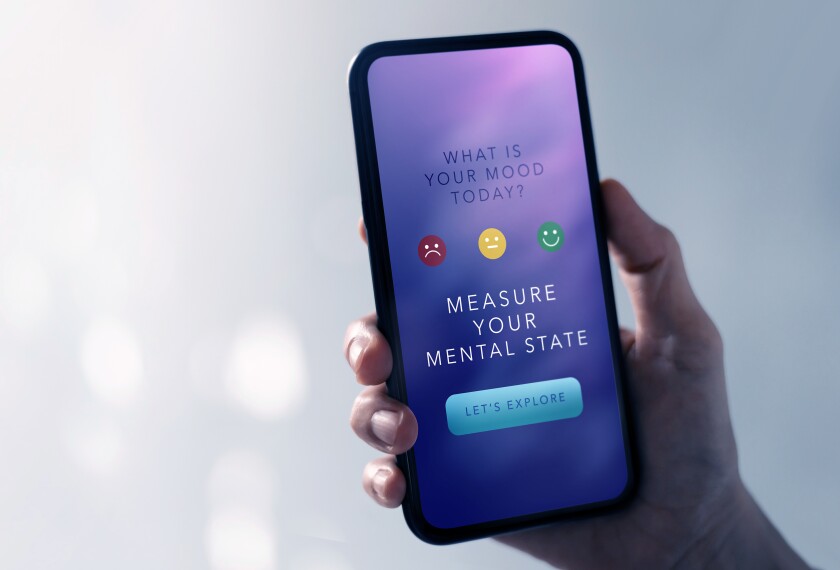Many school districts are facing big challenges in curbing the increase in student substance use, according to a recent EdWeek Research Center survey.
“We’ve certainly had a lot more concerns raised in the community about substance use,” said Darrell Sampson, the executive director of student services for Arlington Public Schools in Virginia. “Not just from our substance abuse counselors and student services personnel, but also from our families, our administrators, our teachers.”
In a video conversation with Education Week, Sampson outlines how the Arlington school district is tackling student substance abuse and how it’s engaging the community to be part of the solution.
The conversation has been edited for brevity and clarity.
What is your district doing to address student substance abuse?

We were one of the first in Virginia to declare that we were going to allow students to carry Naloxone at the high school level. [As of May 2023], we’ve made it possible for them, with parent or guardian consent, to be able to carry it within the school. Families are provided either an opportunity through our student information system to opt in or families could also complete a paper form and return that to the school.
We are partnering with the Arlington Addiction Recovery Initiative, out of the county Department of Human Services, which is doing a lot of the training for our students on how to administer Naloxone. We are requiring that as part of the consent that the students have been trained.
Prior to that, we also had installed emergency Naloxone boxes on all of the floors of our secondary schools so that it was available in case somebody happened to come across someone that was potentially overdosing.
What led to the decision to give high school students training and access to Naloxone?
We did have a student die of an overdose at one of our schools this year. I think that really jump-started a community discussion around what steps could we—not just schools but the entire Arlington County community—take to try to prevent this from happening again.
Over the months of conversations with families, students, the school board, and then partnering with our Department of Human Services and the county board, one thing we had talked about was how do we get Naloxone more within our schools? Because that’s something that we can do pretty quickly. We had all of our adults trained. And the conversation came up, “well, why can’t students use it?” We needed to make sure that we were on good legal footing there. The community was really for it. We had a lot of requests from parents, from the students themselves.
Are there other ways that your district is addressing these challenges?
There is a 6th- to 10th-grade health curriculum that goes over substance abuse. But we knew that wasn’t enough, so last school year [2021-22], we began to teach lessons on substances for 5th graders. This year, we also taught them to 4th graders.
We also added some required lessons for our 11th and 12th graders to make sure that they were getting the most up-to-date information because the landscape seems to be changing rapidly.
We’ve also provided education through a series of community conversations to our families. Because if you’re a parent unless you have gone out and sought very specific knowledge, this is a whole new brand of substances that wasn’t around 20 years ago. We wanted to make sure that families were aware of what the substances were, what some of them can look like—particularly the counterfeit substances—what those impacts can be, and then the general signs that they should look for in their students.
What are some of the challenges that schools face when addressing substance abuse?
Some of it has been really around ensuring that it’s a community discussion and not that it’s the sole responsibility of schools. I’m not shirking responsibility of schools in providing education and providing additional support. I believe very strongly in our substance abuse counselors and the work that they do with students who might be engaging with substances to provide counseling services or additional outpatient or inpatient treatment.
But it’s also important for us to work collaboratively with our community, governments, law enforcement, as well as our parents. I think that we’ve been able to do that here. In the last couple of months, I feel like this has become a communitywide issue that has come with a lot of community collaboration, and that’s really where it needs to be. We all have to be working together, because not one single thing that anybody does or any one entity does is really going to solve this. We all have to be doing our part.
Do you have any advice on how to get that buy-in from the community?
As schools we have to think about what is our role here? What is our capacity? What are we able to do? And then it’s being willing to have those conversations to say, “this is what we’re doing, but we need help with this” or “it would be great if the community could also do this.” And be willing to sit with the community and talk through some of those concerns.
Collectively, we all want for students to be healthy. We all want them to live, we all want them to be mentally well, we want them to thrive and have lots of opportunities. Let’s start from that place. And then let’s talk about this particular issue that’s impacting our youth.






